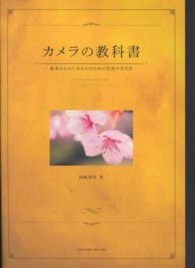Full Description
Embodying Mexico examines two performative icons of Mexicanness--the Dance of the Old Men and Night of the Dead of Lake Pátzcuaro--in numerous manifestations, including film, theater, tourist guides, advertisements, and souvenirs. Covering a ninety-year period from the postrevolutionary era to the present day, Hellier-Tinoco's analysis is thoroughly grounded in Mexican politics and history, and simultaneously incorporates choreographic, musicological, and dramaturgical analysis.
Exploring multiple contexts in Mexico, the USA, and Europe, Embodying Mexico expands and enriches our understanding of complex processes of creating national icons, performance repertoires, and tourist attractions, drawing on wide-ranging ethnographic, archival, and participatory experience. An extensive companion website illustrates the author's arguments through audio and video.
Contents
Part One: Setting the Scene: Many Mexicos ; Introduction ; 1. Beyond Your Expectations: Twentyfirst Century Mexico ; 2. Discursive Communities: Performism, Nationalism, and Tourism ; Part Two: Tracing Ninety Years of Performism ; 3. Forging the Nation: the Postrevolutionary Years ; 4. Appropriation and Incorporation: From Island Village to Capital City ; 5. Destination Lake Patzcuaro: Creating a Tourist Attraction with Night of the Dead ; 6. Authentic Mexican Dances: The Palace of Fine Arts and Across the Border ; 7. Films, Visual Images, and Folklorico: Belonging, Difference, and Bodies ; 8. Experiencing Night of the Dead: Festivals, Contests, and Souvenirs ; 9. Disseminating The Old Men: Mexico City, Europe, the World ; 10. Keeping It Local: Reappropriation, Migration, and the Zacan Festival ; Part Three: Embodiment, Photographs, and Economics ; 11. In the Body: Indigenous Corporeality, Work, and Interpretation ; 12. Capturing Bodies: Postcards, Advertising, and the World's Fair ; 13. Celebrating and Consuming Bodies: Economic and Symbolic Production








